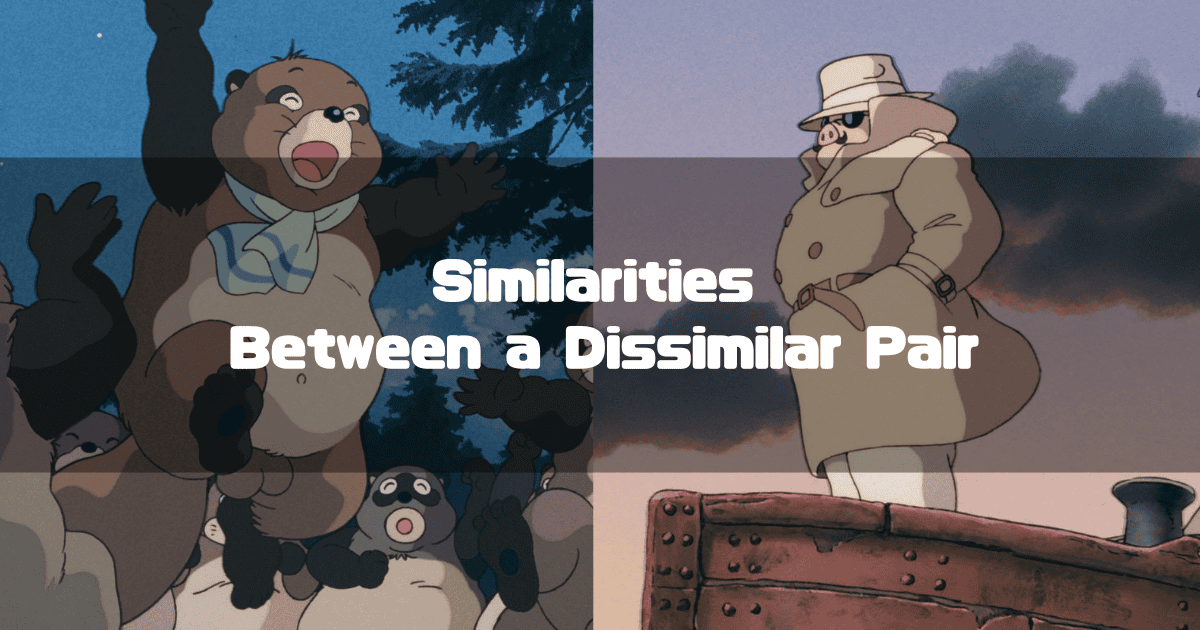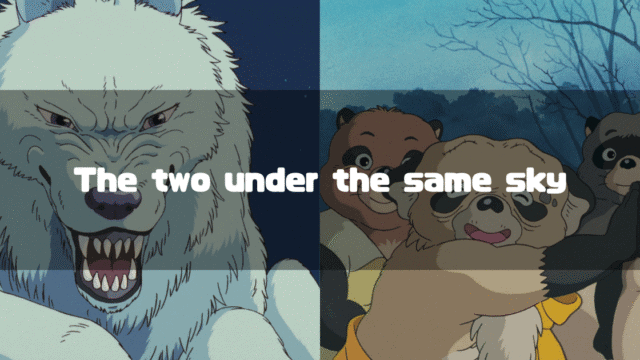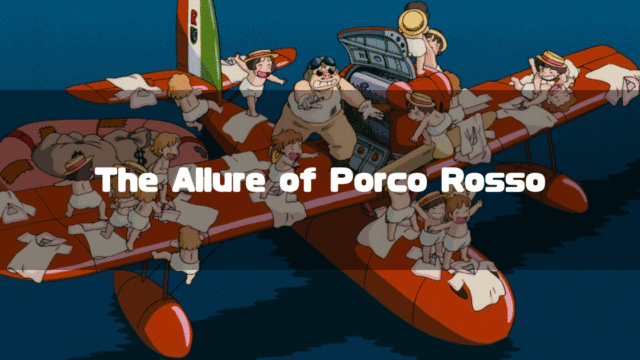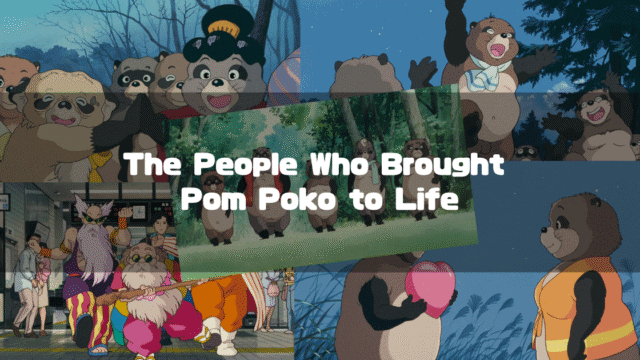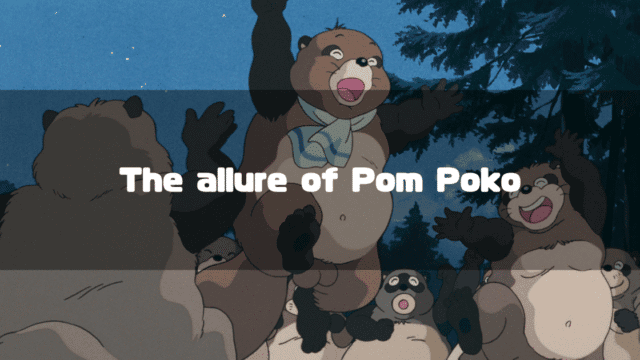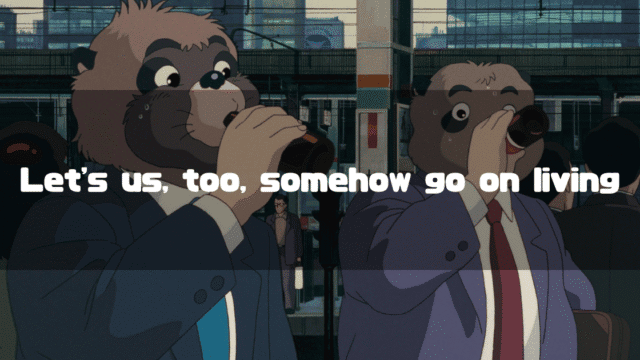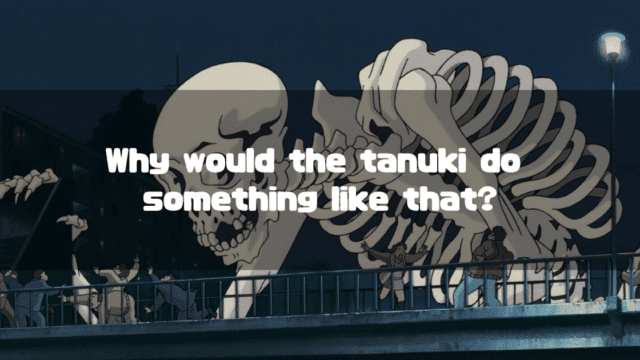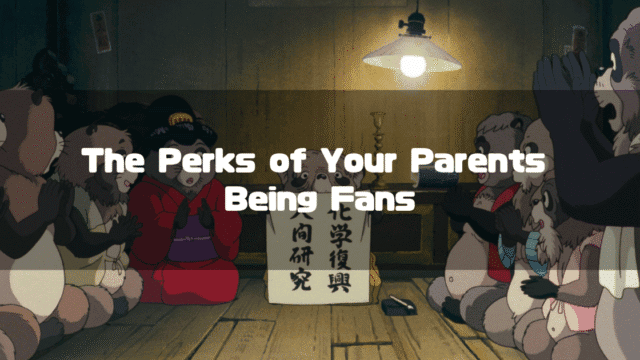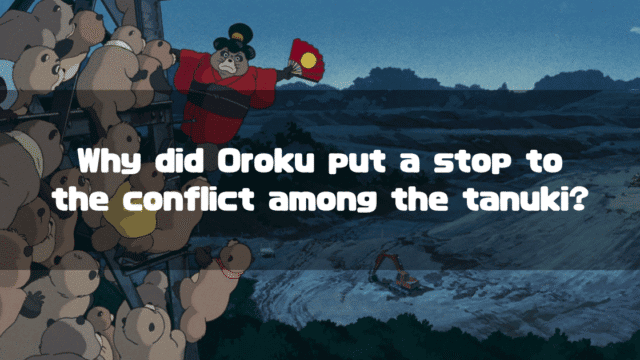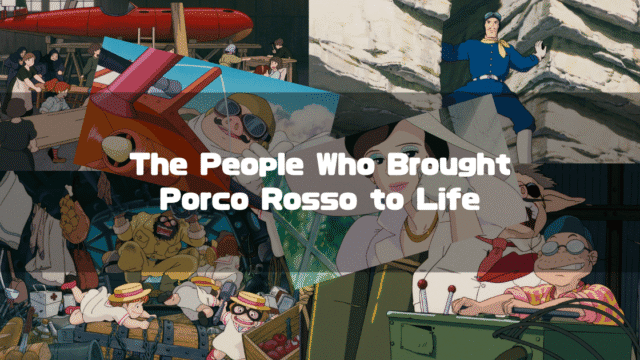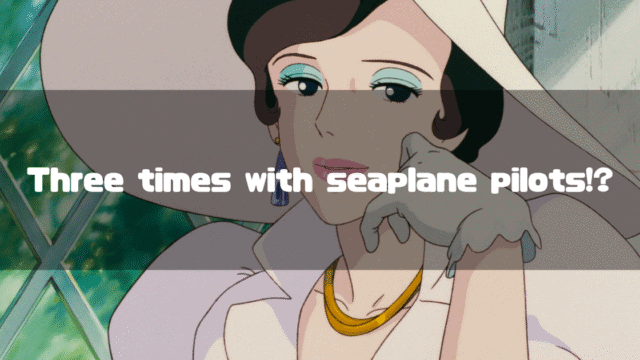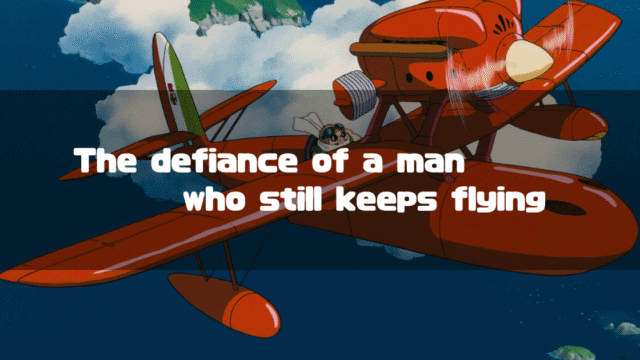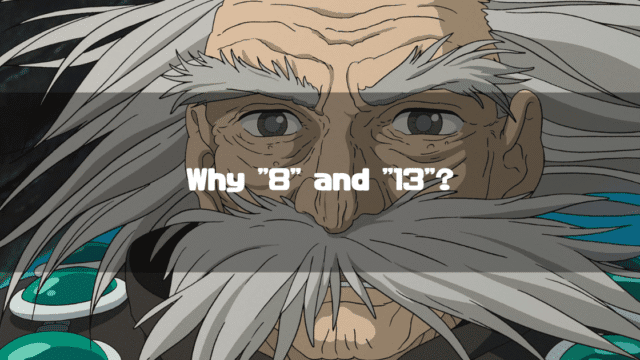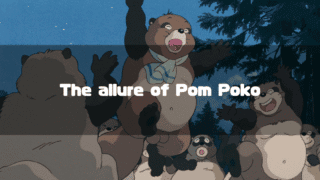Pom Poko(Official Studio Ghibli Website) is an animated feature film directed by Isao Takahata, released in 1994.
Among the many Ghibli films, it remains my favorite to this day. This time, I’d like to focus on Ponkichi, the best friend of the protagonist Shoukichi in Pom Poko.
Despite appearing from the beginning of the story and studying the art of transformation with Shoukichi and the others, he suddenly disappears from the main stage midway through the story, only to reappear at the end to deliver the film’s closing lines.
Although he was a completely inconspicuous character, he brilliantly stole the show at the end.
So, why was such a structure necessary?
To understand this, I want to use the protagonist of Porco Rosso(Official Studio Ghibli Website), Porco Rosso, as a reference point. When thinking about the character of Ponkichi, Porco Rosso’s way of life strangely comes to mind.
In the following article, I will consider what kind of existence Ponkichi was in Pom Poko while looking back at Porco Rosso from Porco Rosso.
Now, what kind of character was Ponkichi in Pom Poko?
*This article is an English translation of the original Japanese article, 【平成狸合戦ぽんぽこ】影の主人公ぽん吉とポルコ・ロッソ.
Let an AI walk you through the highlights of this post in a simple, conversational style.
-
Ponkichi as the hidden protagonist, the “observer”
Unlike the other tanuki who were passionate about the conflict with humans, Ponkichi was a character who consistently “lived like a tanuki.” His stance of observing the situation from a distance overlaps with that of Porco Rosso in Porco Rosso. Therefore, he was a fitting character to conclude the story, embodying the spirit of “Somehow, we go on living.” -
A way of life that shines in a “story of defeat”
Pom Poko is a thorough story of defeat, but even within it, Ponkichi never forgot his tanuki nature and stuck to his own way of life. His attitude of not being swallowed by the dire situation and maintaining his own identity is rich with suggestions for an ideal way of life, not just for tanuki but for us humans as well. -
The contrast with Shoukichi highlights Ponkichi’s significance
While the main protagonist, Shoukichi, was at the center of the battle and constantly troubled, Ponkichi watched the whole situation from the outside. The structure of these two, who had their respective viewpoints from the “inside” and “outside,” reuniting at the end symbolizes the depth and hope of this story.
Ponkichi’s Role in Pom Poko and the Porco Rosso Way of Life
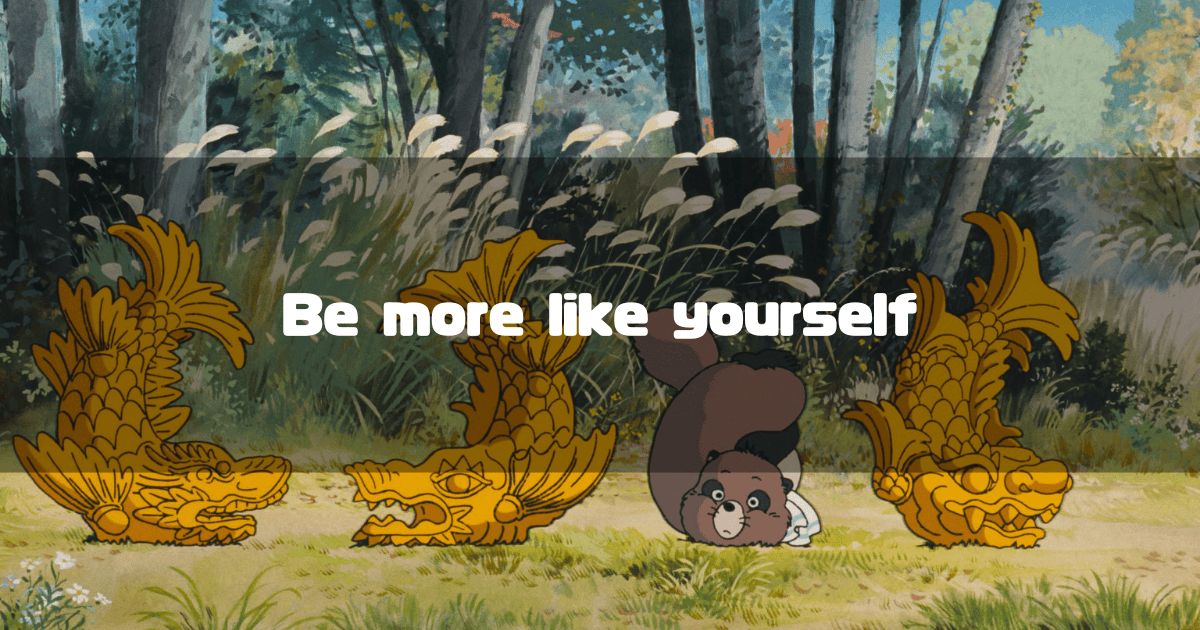
From here, I will consider the role of the character Ponkichi, but first, let’s recall what kind of life Porco Rosso lived.
The Porco Rosso Way of Life
I think there are various ways to view the film Porco Rosso itself, so it might be difficult to isolate just “Porco Rosso,” but the key points are probably the following:
- Porco was a hero of World War I.
- The era has fallen into the Great Depression, becoming a time of “money, money, money.”
- Porco has the option to return to the military but chooses not to, instead working as a “bounty hunter” against sky pirates.
The crucial point is that Porco himself has been a victim of a kind of complete turnaround, from “war to economy.”
The values that were cherished until then have been overturned, and the world has become completely different. It’s a world where comrades and enemies who died in the war are not looked back upon.
The story of Porco Rosso is the story of a man who “opted out” of such a world (in fact, not only Porco but all the sky pirates who opposed him are also part of the “opt-out group”).
In other words, “That’s what being cool is all about” probably refers to a way of life where one takes a detached view of the situation and asks, “This is what it means to live, right?“
However, the beauty of Porco Rosso lies in the fact that even such a man is eventually captured by Gina, but that’s another story.
Ponkichi, Who Was Always Observing the Situation from a Distance
Looking back at Ponkichi in Pom Poko, it seems that, like Porco Rosso in Porco Rosso, he deliberately chose a way of life different from the trends of the Tama tanuki.
It’s true that Ponkichi may not have had a talent for transformation, but it’s not that he was bad at it or couldn’t do it. Rather, wasn’t he actively turning his back on the “situation” where everyone was in a panic, yet overjoyed to have finally found an “enemy”?
As Shoukichi mentioned in the film, Ponkichi wanted to live “like a tanuki.”
Meanwhile, the other tanuki were passionate about their fight against the humans, and the situation reached its peak with the “Operation Specter.” Following the failure of the operation, the tanuki organization collapsed, but it was the tanuki who couldn’t transform who suffered the most mentally.
They eventually became followers of the “Odori Nenbutsu” (Dancing Prayer) founded by Yashimano Hage and committed mass suicide by riding a treasure ship.
But lo and behold, it is revealed at the end of the film that Ponkichi had escaped this mass suicide.
How was that possible?
Perhaps it was because Ponkichi had been watching from a somewhat detached perspective as his fellow tanuki lost their “tanuki-ness” in the frenzy of the battle against the humans.
As a result, even after losing the dream of “Operation Specter,” he didn’t feel the fundamental despair that the other non-transforming tanuki did. Ponkichi must have looked at the despairing and confused tanuki and thought, “If it doesn’t work, it doesn’t work. Why don’t we just do things our own way?”
And that figure overlaps with Porco Rosso, who looked at the world from an angle, a world that was in a new state of chaos called the Great Depression despite having overcome the chaos of World War I.
Ponkichi as the Hidden Protagonist
Thinking this way, we might begin to see the reason why it was Ponkichi who concluded the story’s end.
Pom Poko is a sadly “story of defeat,” but the important thing is “what happens after the defeat.” This film offers a suggestion about how to live afterward with the words, “Somehow, we go on living.”
I have written about these words before in the following article:
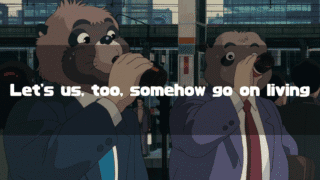
The nuance might be slightly different from the article above, but if we focus on the character of Ponkichi, it seems that “Somehow, we go on living.” refers to the way of Ponkichi, who tried to live more like a tanuki than anyone else.
In other words, it would mean “to keep living” without losing one’s identity, no matter the circumstances.
It sounds cliché, but the “no matter the circumstances” part is ultimately the most difficult.
For example, the tanuki were in a dire “situation”:
- It began with them misunderstanding the territory dispute with humans as a territory dispute among tanuki.
- When they finally decided to fight the humans, their efforts were ineffective.
- Even the ultimate weapon prepared by the elders of Shikoku, “Operation Specter,” ended in failure.
In such a situation, I think it would have been impossible to remain “tanuki-like,” but Ponkichi managed it. Even the elite tanuki who were skilled at transformation were in a state of confusion, so Ponkichi’s mental strength (or perhaps insensitivity) was extraordinary. And he embodied the idea of “Somehow, we go on living.”
Wouldn’t you say that Ponkichi is the hidden protagonist of Pom Poko?
Shoukichi and Ponkichi
So far, we have considered the hidden protagonist, Ponkichi, but let’s also think a little about the main protagonist, Shoukichi.
The most important thing about Ponkichi’s existence was that he was “observing the situation from a distance,” but in fact, Shoukichi also had that quality, always questioning “Is this right?” and spending a “troubled youth.”
What was different from Ponkichi was that Shoukichi was at the center of the battle with the humans and had no intention of deviating from it.
In other words, Shoukichi observed the situation from the center of the war against humans, while Ponkichi observed the situation from outside of it.
And the fact that these two reunite at the end is quite dramatic.
What did Shoukichi do after that?
The above is everything I personally thought about the relationship between Ponkichi and Porco Rosso. I wrote a little about Shoukichi at the end, but I think by deliberately pursuing the similarities with Porco Rosso, the importance of Ponkichi in Pom Poko has become clear.
This work was a story of the tanuki’s chaotic struggles, but we who live in the real world are much the same. Or rather, it could be said that it depicts our own chaotic struggles through the guise of the tanuki (just like Rakugo!).
And since we have watched Pom Poko and Porco Rosso, it is very important to be conscious of looking at such chaos from a distance. As long as we don’t forget that we are also involved.
The images used in this article are from the Studio Ghibli Film Stills collection.
About the Author
Recent Posts
- 2025-10-15
Indiana Jones and the Dial of Destiny(2023):Historical Background-WWII, the Real Dr. Schmidt, the Siege of Syracuse, and the Antikythera Mechanism - 2025-10-08
Why Does Children Who Chase Lost Voices Feel So Ghibli-esque? [Makoto Shinkai’s “Tale of Farewell”] - 2025-10-07
5 Centimeters per Second: Characters, Voice Actors, Character Analysis and Character Map - 2025-10-06
5 Centimeters per Second: Full Synopsis, Analysis, Ending Explained & Character Map (Spoilers) - 2025-10-04
5 Centimeters per Second Is Neither Depressing Nor Terrible: A Positive Interpretation of the Film

